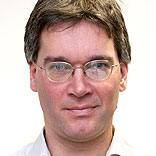Growth
Growth in Russia slowed from 4.3 percent in 2011 to 3.4 percent in 2012. This is less than half the rate of the decade up to the 2009 crisis.
The economy slowed in the second half of 2012 as:
- Sluggish external demand for Russian exports as global growth projections are revised downwards;
- Companies run down inventories at the end of the year; and
- Agricultural output was hit by the drought.
Trade and capital flows
The current account surplus declined somewhat due to weak export demand in spite of high oil prices. The non-oil current account deficit remained high.
The Central Bank of Russia increased foreign reserves thanks to:
- Lower capital outflows and
- The shift to flexible exchange rate policies.
Jobs
The labor market remains tight.
The unemployment rate declined across the country, and vacancy and replacement rates increased.
However, high inflation and the slowdown in economic activity translated recently into fewer hours worked and weaker growth in wages and incomes.
Money, exchange rate and credit
Inflation remained noticeably above the target range due to:
- Higher food prices due to the drought;
- Increases of administrative prices, and
- Tight labor markets and fast credit growth.
The CBR kept the main policy rates unchanged since December 2012. This will help to anchor inflation expectations in line with the CBR policy to move towards inflation targeting.
Government budget
Fiscal policy was expansionary in 2012 than in 2011, although the rise in expenditures fell short of the planned increase and the federal budget remained close to balance.
Based on the newly adopted fiscal rule and medium-term budget, the government envisions moderate fiscal consolidation up to 2015.
However, the 2013 fiscal balances is likely to worsen and the non-oil fiscal deficit is likely to remain elevated.
Prospects
Growth in 2013 will be slightly lower than in 2012 due to:
- Weak global sentiment,
- Flat oil prices,
- High inflation, and
- Sluggish domestic demand.
The main upside risk is that the recent improvements in global business sentiment could translate into a faster rebound of the global and domestic economies. In addition, businesses could step up investment in response to capacity constraints and consumer could reduce savings in order to step up spending..
The main downside risk remains a persistent drop in the oil price. This could be triggered by either a renewed slowdown in the global economy or a decline in oil supply disturbances in the Middle East.
Policies
Economic activity in Russia has lost momentum. In order to revive the economy, policies face two challenges.
First, it has to manage macroeconomic policies so as to ensure economic stability.
Second, Russia has to step up structural reforms so as to lift the growth potential.

